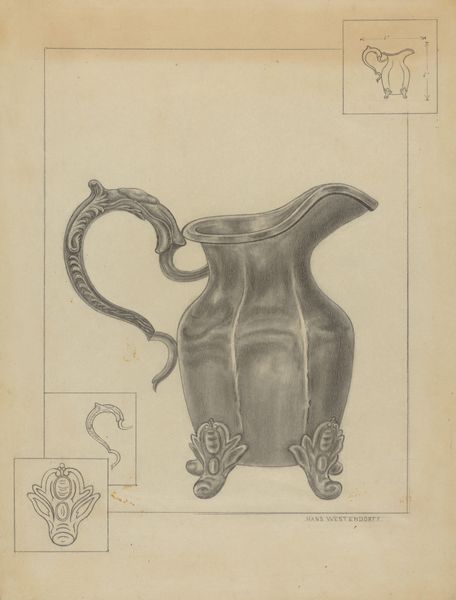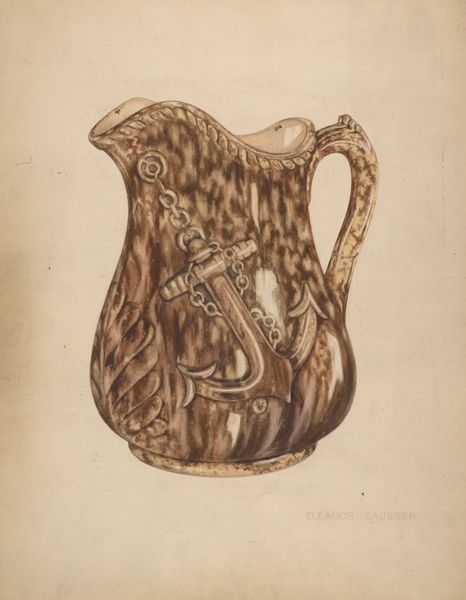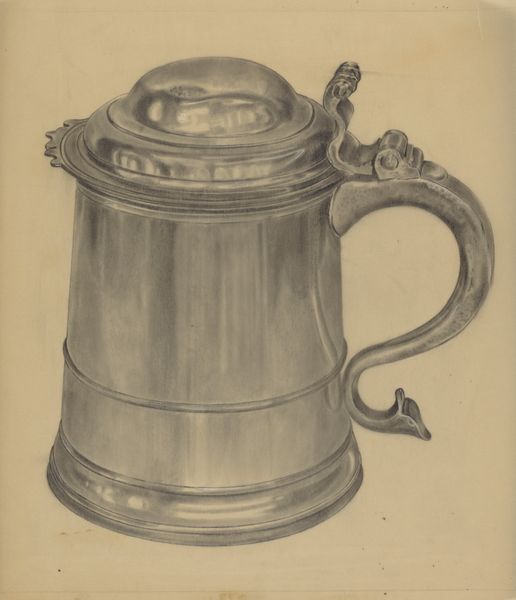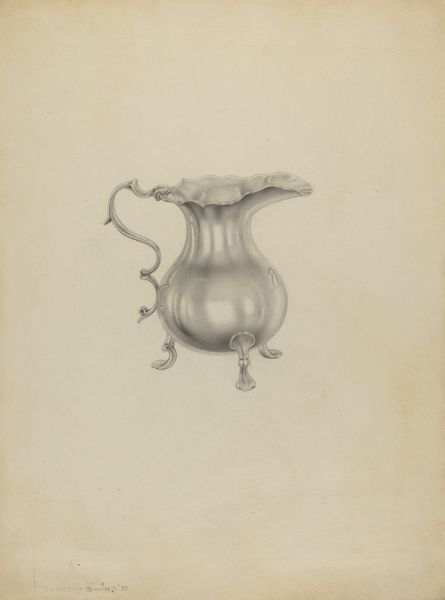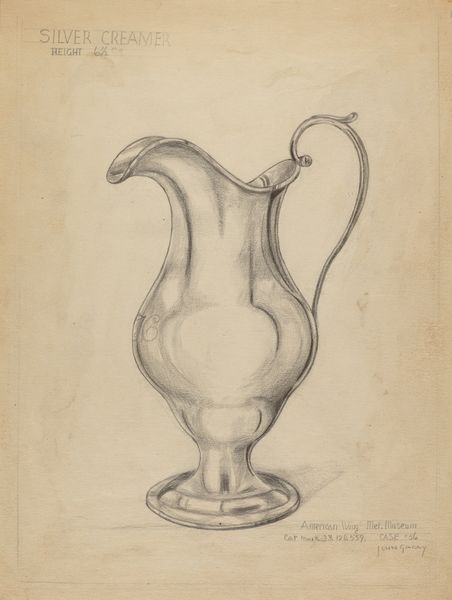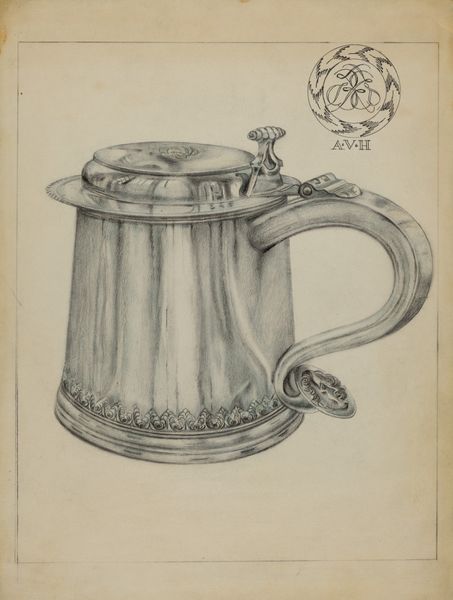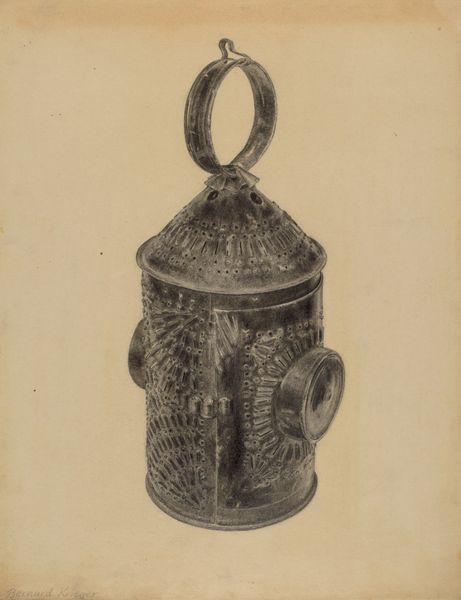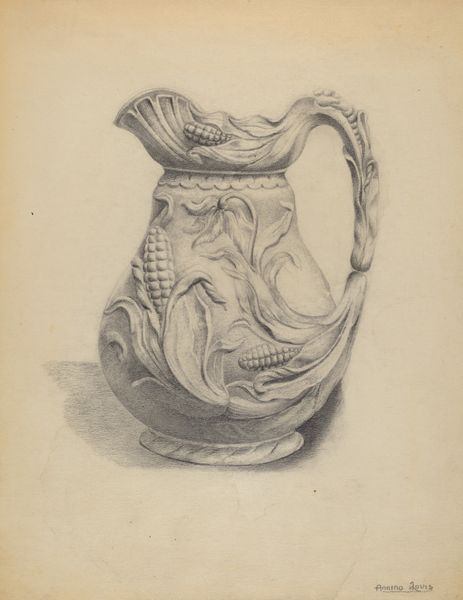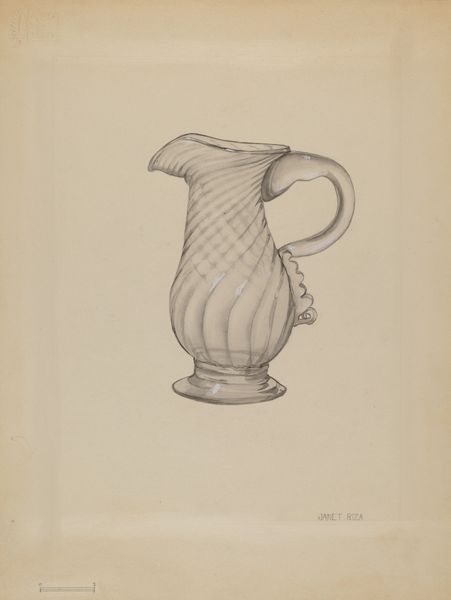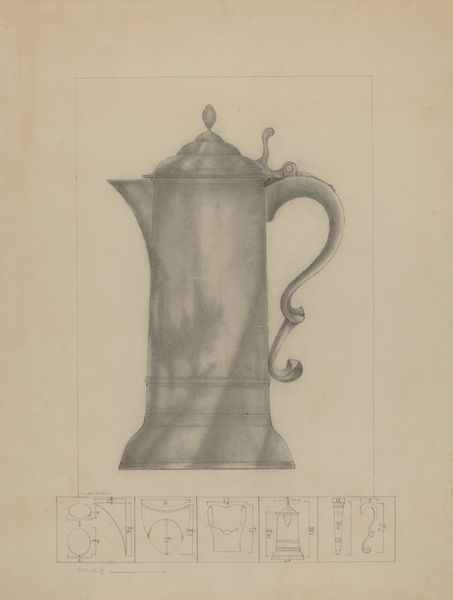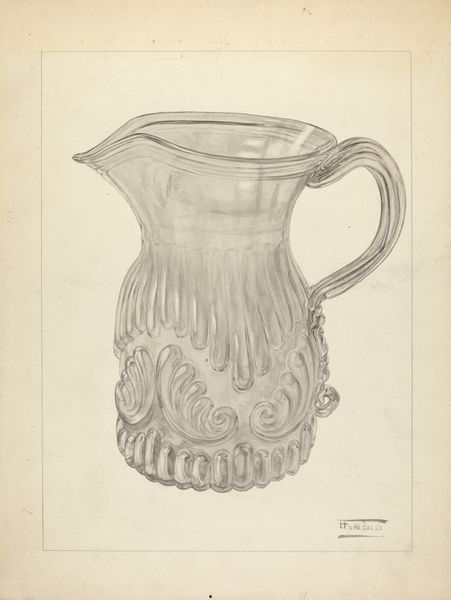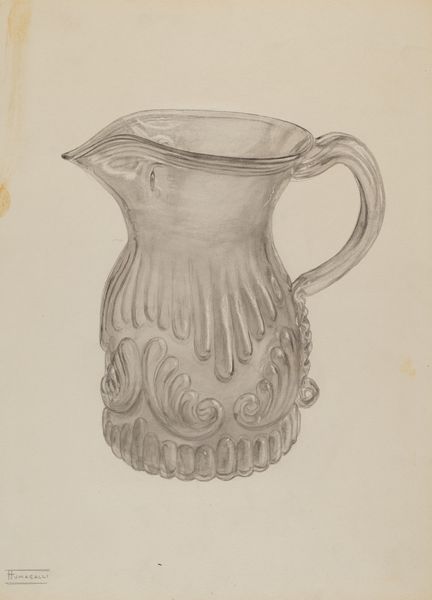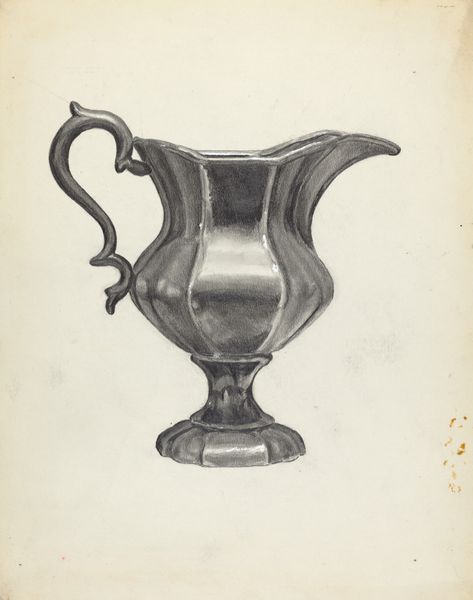
drawing, pencil, graphite
#
drawing
#
charcoal drawing
#
pencil drawing
#
underpainting
#
pencil
#
graphite
#
academic-art
#
realism
Dimensions: overall: 28.2 x 22.7 cm (11 1/8 x 8 15/16 in.) Original IAD Object: 6" high; 6" wide
Copyright: National Gallery of Art: CC0 1.0
Curator: We’re looking at Hans Westendorff's "Pewter Pitcher," likely created between 1935 and 1942. It’s rendered in graphite and pencil, showcasing an academic realism style. What jumps out at you? Editor: Gosh, it feels melancholy. Something about the muted tones, the subject itself, whispers of quieter times, you know? Like it's been sitting on a dusty shelf for decades. Curator: Pewter, historically, was quite a common material for household objects, affordable to the burgeoning middle class. Westendorff’s choice to depict it elevates the everyday, asking us to consider its value beyond mere function. It’s interesting, too, how the underpainting lends it that antique appearance. Editor: Absolutely! It's like he's not just drawing the pitcher, he's capturing a sense of age. The slight imperfections in the metal are almost lovingly rendered, lending authenticity and warmth in stark contrast to our shiny, machine-made objects today. He makes you appreciate what it is; labor meets beauty and design! Curator: His meticulous technique brings to mind the Arts and Crafts movement, where the value of handcrafted goods was celebrated as a counterpoint to industrialization. It invites the viewer to consider the socio-economic contexts around art, how a humble pitcher might reflect shifting cultural values regarding craft, labor and material. Editor: It does! The detailing on the handle and feet transforms it into something quite regal, really. This wasn't just functional, it's clear the designer/maker took pride and probably the owner too. Almost an aspirational object in times that, historically, weren't that shiny. Curator: And that tension between aspiration and utility underscores a central theme of Realism, depicting familiar objects and situations but prompting consideration of the processes that create them. What does that mean in a time where we're re-evaluating so many processes in the art world? Editor: Food for thought indeed! You look at this humble picture, and it has all these social layers. So interesting. Curator: It makes you appreciate looking beyond just the surface, seeing beyond that metallic shimmer of pencil on paper.
Comments
No comments
Be the first to comment and join the conversation on the ultimate creative platform.
